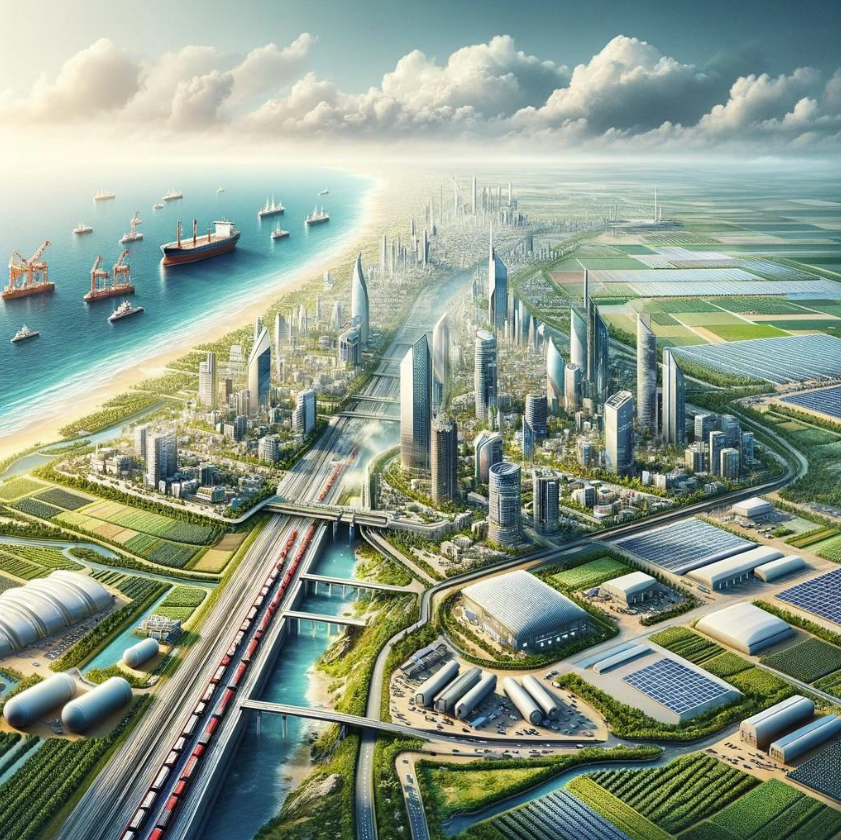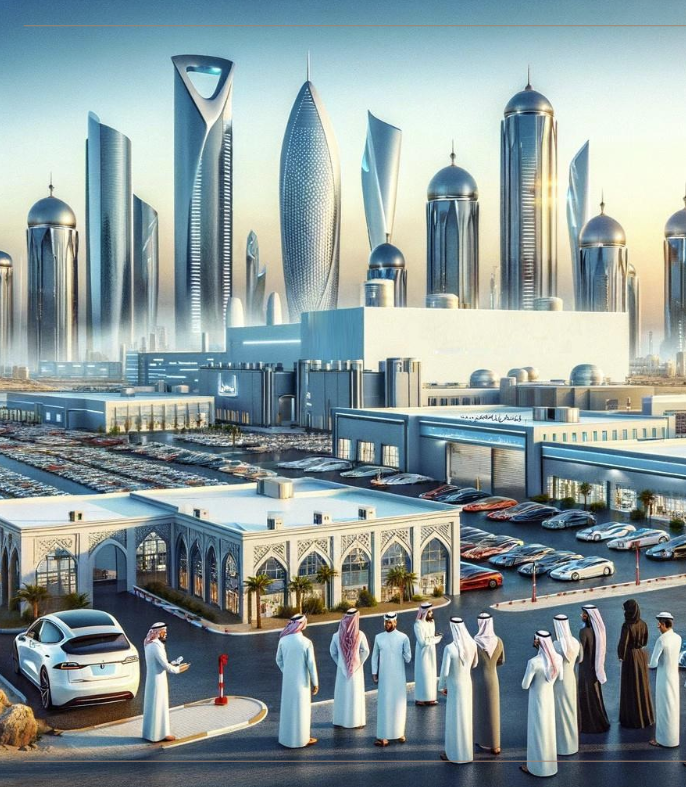On May 3rd, the Office of Israeli Prime Minister Benjamin Netanyahu reportedly released a ten-year plan, titled “Gaza 2035,” to transform the Gaza Strip into a modern city with a booming economy, according to The Jerusalem Post. The plan drew interest as well as criticism, with a head of state from the United Arab Emirates (UAE) condemning the proposal.
The plan would see Israel investing into the local economy and attempting to integrate the city into the region’s economy, thereby bringing Gaza to the ideological center.
The document, a PowerPoint presentation that refers to Gaza as an “Iranian outpost” that “sabotages emerging supply chains” and “thwarts any future hope of the Palestinian people,” lays out a full vision of Gaza 2.0, where the Strip’s central location could be utilized as a strength to promote trade throughout the Levant and the greater Middle East. In its own words, the strategy is to clear out all extremist dissidents and inaugurate a “rebuilding from nothing” phase until the Strip is ready to become a state and join the world economy.
Learn the benefits of becoming a Valuetainment Member and subscribe today!
A page in the presentation draws out the map of the proposed megacity, which it calls the “Gaza-Arish-Sderot Free Trade Zone.” A free trade zone is defined as an “area within which goods may be landed, handled, manufactured or reconfigured, and reexported without the intervention of the customs authorities,” so as “to remove from a seaport, airport, or border those hindrances to trade caused by high tariffs and complex customs regulations,” according to Britannica.
The presentation also includes AI-generated images to visualize what the new Gaza would look like. Some social media users took offense to the casual way in which they used “cheap AI” to quickly add a utopian feel to the controversial plan.
As to how the plan could be executed, the document breaks it down into three stages. The first, lasting 12 months, would be “humanitarian aid,” where Israel would create areas to harbor residents and give them aid beginning in the north and slowly working their way down to the south. This would take place over 12 months. Israel proposes a coalition of Arab nations (naming Saudi Arabia, the United Arab Emirates (UAE), Bahrain, Egypt, Jordan, and Morocco) to administer the aid in these pockets, and Gazans would be in charge of them.
The next stage would take five to ten years, where Israel would recede their security oversight of the strip and hand it over to a newly formed Gaza Rehabilitation Authority (GRA) that would be created by the Arab coalition. This GRA would be in charge of disbursing grants and managing the region’s budget, gearing it up to be in full economic operation in “Marshall Plan”-like fashion.
The third stage, which they title “Self-Governance,” would grant Palestine autonomy as a political body but would permit Israel to reserve the right to respond to “security threats.” Israel suggested the Palestinian authority could also oversee the West Bank, should all populations reach full “deradicalization.” At this point, Palestine would join the Abraham Accords and a two-state solution would ostensibly be reached.
Gaza would serve as a major industrial port on the Mediterranean Sea and would be a key exporter not only for Gazan products but also oil from Saudi Arabia and various other commodities and resources from the Gulf region. The rebuilding of Gaza would kickstart the NEOM project of Saudi Arabia, a proposed urban area which includes The Line, a city in the form of a linear building stretching hundreds of miles.
Similarly, solar energy fields and desalination plants would be created alongside the new Strip city. The plan suggests there could also be manufacturing sites for electric vehicles (EV).
The UAE Foreign Minister, Sheikh Abdullah bin Zayed Al Nahyan, criticized the plan on X. “The United Arab Emirates denounces the statements of the Israeli Prime Minister, Benjamin Netanyahu, about calling on the state to participate in civil administration of the Gaza Strip,” he wrote. He argued Netanyahu had no legal basis to push the plan, which he referred to as a way to “provide cover for the Israeli presence in the Gaza strip,” something the UAE “refuses to be drawn into.” He further stated the UAE will support a future Palestinian government that is forged from “integrity, competence and independence.”
تستنكر دولة لإمارات العربية المتحدة تصريحات رئيس الوزراء الإسرائيلي، بنيامين نتنياهو، حول دعوة الدولة للمشاركة في إدارة مدنية لقطاع الغزة القابع تحت الاحتلال الإسرائيلي.
إذ تشدد دولة الإمارات بأن رئيس الوزراء الإسرائيلي لا يتمتع بأي صفة شرعية تخوله باتخاذ هذه الخطوة، كما ترفض…
— عبدالله بن زايد (@ABZayed) May 10, 2024
According to Al Jazeera, there are reports that Egypt, Morocco, and the UAE are on standby awaiting approval from their statemen on whether to approve of US-drawn plans to establish a peacekeeping presence in the Strip once the US government recognizes Palestinian statehood.
In March, Donald Trump’s son-in-law Jared Kushner, who is himself the son of a powerful real estate broker, went viral for saying Gaza’s “waterfront property” could be “very valuable” and that Israel should displace its citizens while it “cleans up” strip. While Kushner was making the point in the context of saying that Hamas was stealing the people’s resources that could be better spent on education, the media ran with his comments and used it as evidence that he wanted to steal and the land and make profit off it.
https://twitter.com/ChayaRaichik10/status/1770500572904575145
A full copy of Israel’s “Gaza 2035” plan is available here.
 Shane Devine is a writer covering politics and business for VT and a regular guest on The Unusual Suspects. Follow Shane’s work here.
Shane Devine is a writer covering politics and business for VT and a regular guest on The Unusual Suspects. Follow Shane’s work here.





















Add comment